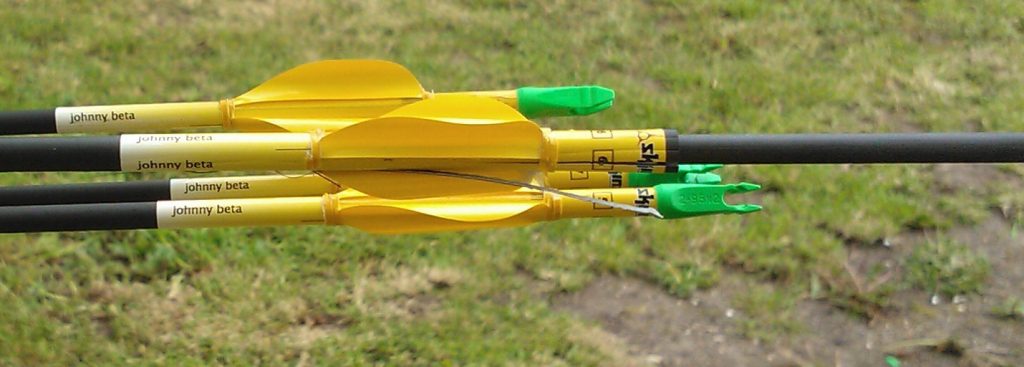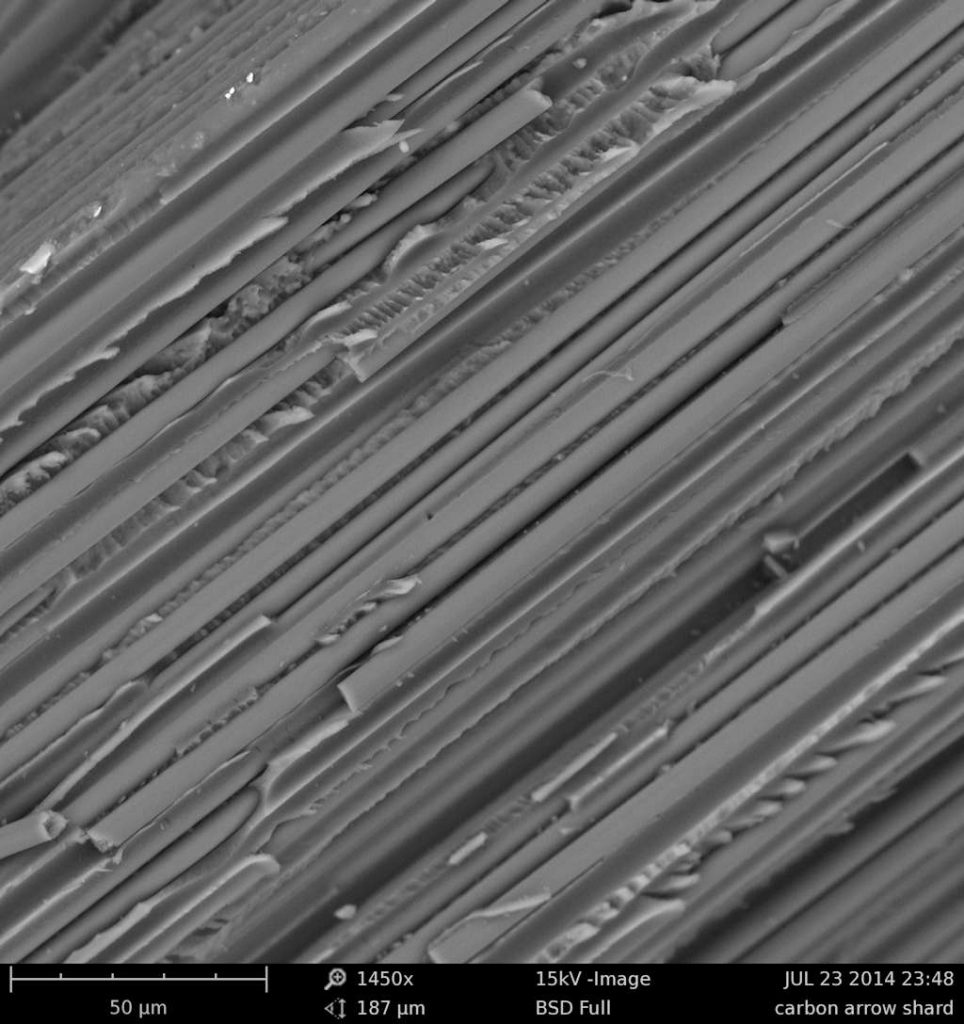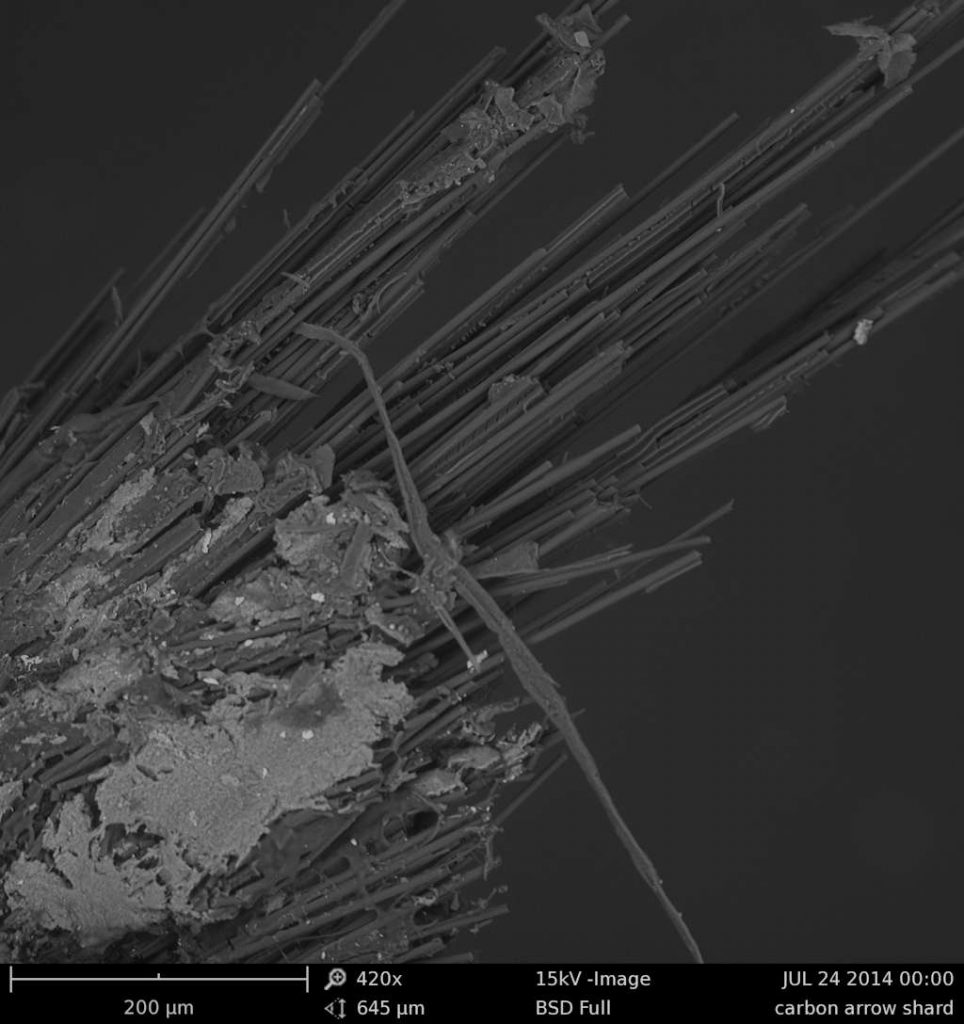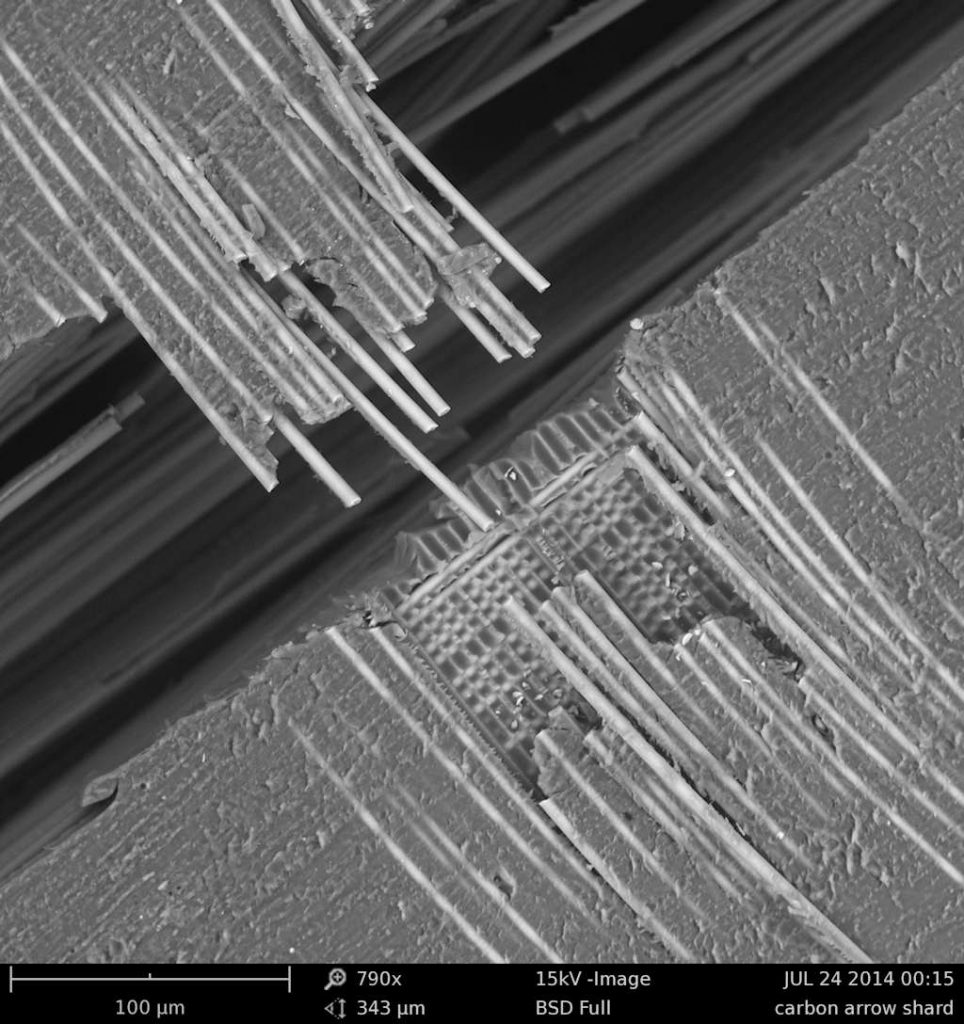 When I’m not being a geology nerd and using our excellent microscopy facilities for work, I’m also a keen amateur archer. Most of the time I’m probably better at petrography than I am at archery. However, now and again I have a good day and can shoot arrows into something resembling a good group. On a really good day I “Robin Hood” myself and shoot an arrow into the back of another one already in the target.
When I’m not being a geology nerd and using our excellent microscopy facilities for work, I’m also a keen amateur archer. Most of the time I’m probably better at petrography than I am at archery. However, now and again I have a good day and can shoot arrows into something resembling a good group. On a really good day I “Robin Hood” myself and shoot an arrow into the back of another one already in the target.
The resulting carnage offers a great opportunity to look at arrow construction in a little more detail:
Detail showing arrow construction from tightly-packed, carbon fibres aligned along the arrow shaft. The carbon fibres are of remarkably (to a geologist anyway) uniform diameter and are bound together with some type of (no doubt,top-secret company-specific) resin.
Lower magnification image showing the devastation caused by an arrow impact. The brighter material is Aluminium from the core of the arrow. The darker grey material are broken fragments / strands of carbon fibre.
The final image shows the finer details of arrow construction. The inner aluminium core of the arrow has detached from the carbon fibre and resin outer layers. What we see here then, is the under-surface of the resin used to bond the carbon fibres to the aluminium core. This is overlain by a layer of carbon fibres wrapped around the aluminium core. This is overlain by carbon fibres which are aligned parallel to the length of the arrow shaft. On impact, the arrow has split parallel to the outer carbon fibres, and the inner core of wrapped carbon fibres have “snapped”.



